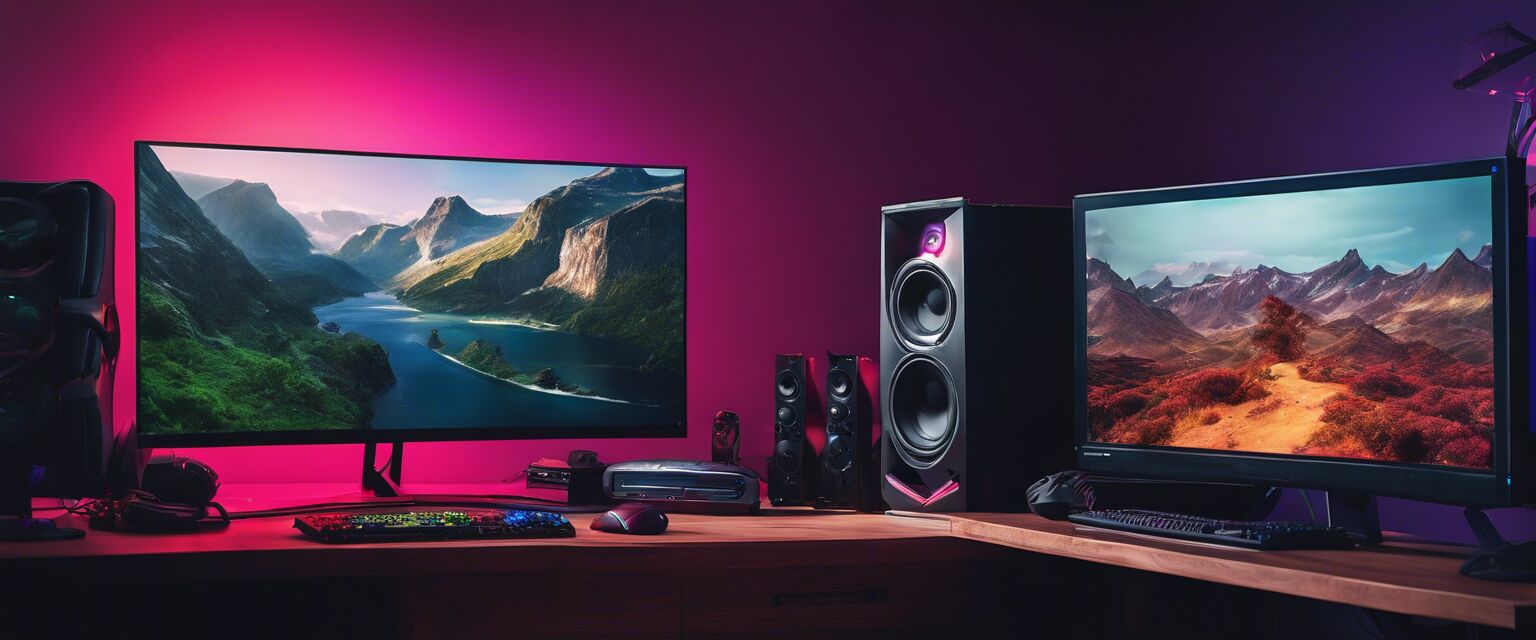
A Gamer's Guide to Monitor vs. TV: Which is Best?
Key takeaways
- Monitors typically offer higher refresh rates and lower input lag compared to TVs.
- TVs generally provide a larger screen for an immersive gaming experience but might lack some technical features.
- Choosing between a monitor and a TV depends on your gaming style and preferences.
- Consider factors like resolution, size, and connectivity options when making your decision.
Deciding between a monitor and a TV for your gaming setup can be a tough decision. Each has its own unique advantages, characteristics, and drawbacks. In this guide, we'll explore the features of both monitors and TVs, helping you understand which might be best suited for your gaming needs. Let's dive into the world of gaming displays.
Understanding the differences
| Feature | Monitor | TV |
|---|---|---|
| Refresh Rate | Higher (often 144Hz or more) | Typically lower (60Hz to 120Hz) |
| Response Time | Lower (1-5 ms) | Higher (6-20 ms) |
| Size | Generally smaller (24"-32") | Larger screens (32" and above) |
| Input Lag | Low (ideal for competitive gaming) | Higher (can vary by model) |
| Panel Type | IPS, TN, VA | LED, OLED, QLED |
Advantages of using a monitor for gaming
- High refresh rates: Monitors often support refresh rates that enhance the smoothness of gameplay.
- Lower input lag: Essential for competitive gamers requiring quick responses.
- Better ergonomics: Generally designed for closer viewing distances and adjustable settings.
- Customization options: Many monitors offer various adjustable settings for brightness and color accuracy.
Advantages of using a TV for gaming
- Larger screen size: Provides a more immersive experience, especially for group play.
- Home entertainment integration: TVs often serve multiple functions beyond gaming, such as streaming.
- More advanced features: Many newer TVs include HDR and 4K resolutions for stunning visuals.
- Variety of sizes: Available in a range of sizes to fit any room layout.
Important features to consider
Refresh rate
A higher refresh rate means smoother gameplay, which is crucial for fast-paced games. Monitors excel here, often reaching 144Hz or more.
Resolution
4K resolution is increasingly common in both monitors and TVs. However, ensure your graphics card can handle the requirements.
Connectivity
Consider what connectivity options you need. Many monitors provide multiple display connections, while TVs offer HDMI and sometimes wireless options.
Space and setup
Evaluate the space you have available. A large TV may be unsuitable for a small room, while a monitor takes up less space on desks.
Comparing quality: Monitors vs. TVs
| Aspect | Monitor | TV |
|---|---|---|
| Color Accuracy | High | Varies (often good with high-end models) |
| Viewing Angle | Limited | Wider |
| Game mode | Dedicated modes available | Varies by model, often present |
| Price | Affordable options available | Ranges widely based on features |
When to choose a monitor
If you're a serious gamer focused on competitive play, or you have limited space, a monitor might be the right option for you. Monitors usually provide the speed and precision needed for competitive gaming, thanks to their lower response times and higher refresh rates.
When to choose a TV
For communal gaming sessions, streaming, or watching movies, a TV is the ideal choice. Its larger screen provides an immersive experience that can make games come to life. Additionally, many modern TVs come equipped with features that enhance gaming bundles.
Tips for your decision
- Test both types if possible in a store before making a purchase.
- Read reviews on specific models to assess their performance in gaming.
- Prioritize what features matter most to you: response time, screen size, or multi-functionality.
- Keep an eye on upcoming technologies and trends in the market.
Regardless of whether you choose a monitor or a TV, ensure it aligns with your gaming habits and lifestyle. Remember to check our Buying Guides for further insights on selecting the best gaming setup.
Pros
- Monitors offer high refresh rates, reducing lag in games.
- TVs provide a larger display for immersive experiences.
- Both options have unique features catering to different audiences.
Cons
- Monitors can be expensive when seeking high-end features.
- TVs may have higher input lag in gaming mode.
- Monitors are often smaller and may not satisfy group gaming needs.
Final thoughts
The decision between a monitor and a TV ultimately comes down to personal preference, gaming style, and scenario. Consider your needs, test both options, and choose the one that enhances your gaming experience. For more information on gaming technologies, visit our News in Gaming Technology section.
